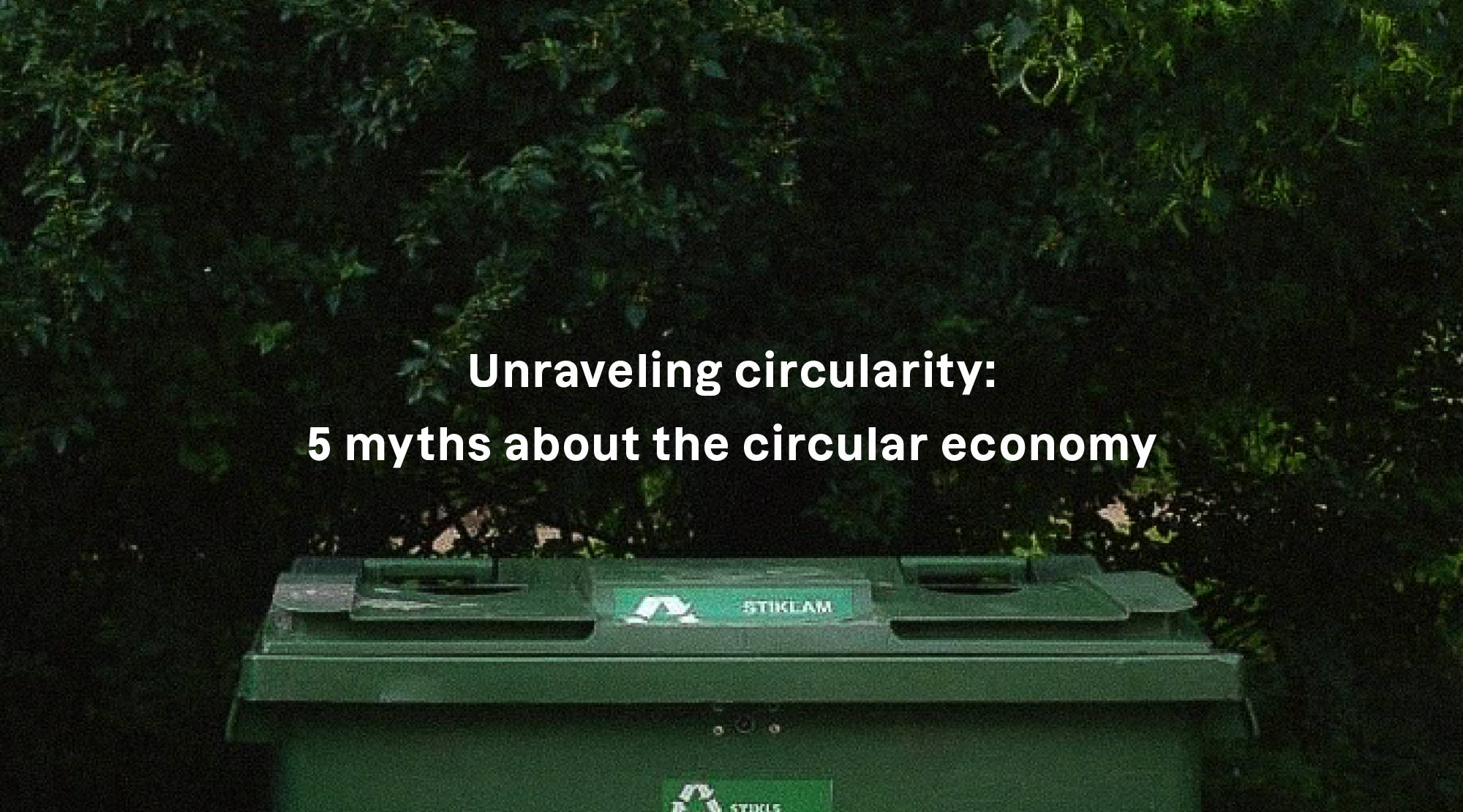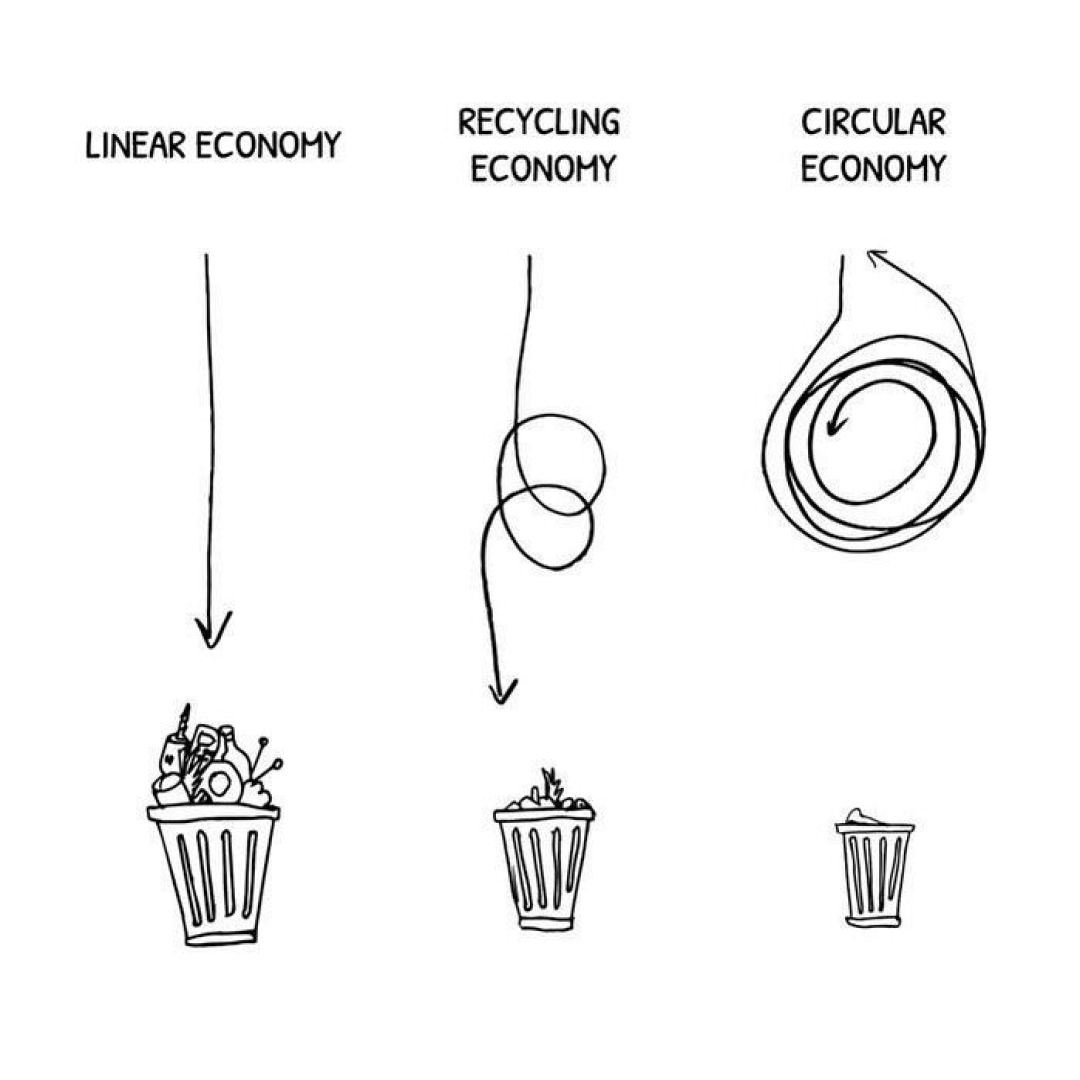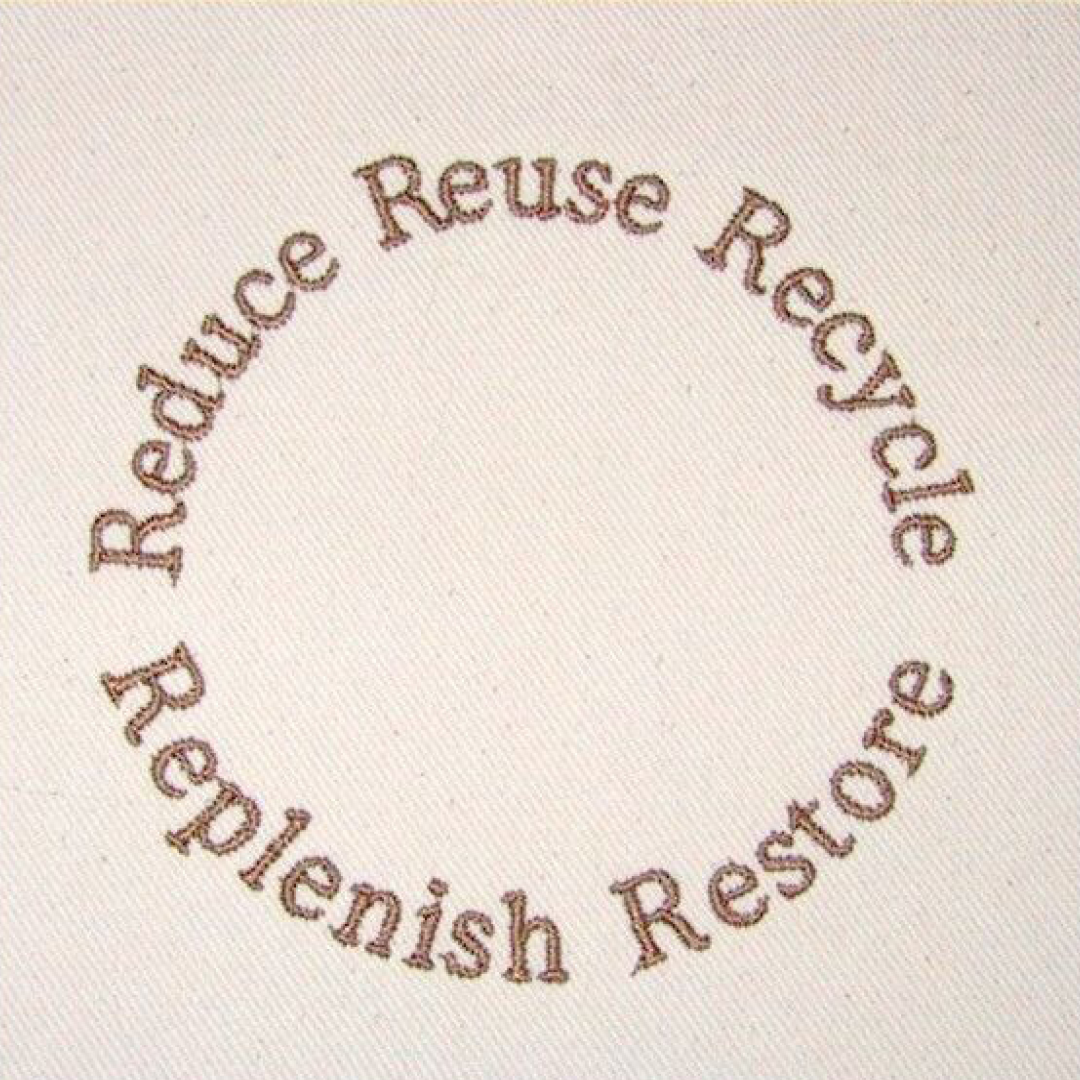
What does the term ‘circular economy’ really mean? Is it just another sustainability strategy within business, or does it represent a broader shift towards a new economic model? The concept of the circular economy is controversial, with various misconceptions circulating in the public debate. In this article, we will break down these arguments and make sense of what the circular economy really means.

What is the circular economy?
The circular economy, as defined by the Ellen MacArthur Foundation, is a system in which materials never become waste and nature is regenerated through processes such as maintenance, reuse, refurbishment, overhaul, recycling and composting. This approach is guided by three principles, driven by design:
- Eliminate waste and pollution
- Circulate products and materials (at their highest value)
- Regenerate nature
By adopting these principles, the circular economy addresses pressing global challenges such as climate change, biodiversity loss, waste, and pollution, while also decoupling economic activity from the consumption of finite resources.
Common myths about the circular economy

MYTH 1 - Circular economy is a sustainability fad which will be over soon
Despite what many people may think, the circular economy is not just the latest sustainability fad. In fact, it dates back to the 20th century, when primitive circular models were already being set up to make products. On top of that, it represents a transformative shift in the way we approach economic activities, which requires top-down management and change within companies, including re-evaluating product design, business models and the entire supply chain. This is in contrast to traditional linear production and consumption models, where resources are simply extracted, used and then discarded. Therefore, the circular economy is not just a temporary trend!
MYTH 2 - Circular economy is a fancier name for recycling
Recycling involves breaking down products and materials considered waste, either mechanically or chemically, into their basic components, which are then used to create new products. The concept behind recycling is to reduce the need for extracting new materials by reusing what we already have in a continuous cycle. While recycling is an important aspect, the circular economy encompasses much more. It is a comprehensive approach that includes other essential elements such as designing products for durability and repair, carefully choosing materials, production processes and distribution methods as well as ensuring that products can be taken back at the end of their life cycle. Recycling, although crucial, is often considered a last resort in circular strategies. Before recycling, other strategies like caring for products, repairing them, and reusing them should be prioritized.
MYTH 3 - Circular business models are too costly to implement and won’t pay off in the future
Contrary to what people may believe, this statement overlooks the long-term benefits and cost savings associated with circular business models. While the circular economy may not yield immediate cost reductions, and transitioning to circular practices may necessitate upfront investments and operational changes, they can result in significant savings over time. Circular approaches often lead to diminished resource consumption, lower production costs, improved efficiency in supply chains, and decreased waste disposal expenses. Moreover, circular business models have the potential to unlock new revenue streams through innovative product design, remanufacturing, and the provision of services rather than products. Therefore, disregarding circular business models as too costly overlooks their potential for long-term profitability and sustainability.

MYTH 4 - Circular economy relies solely on a change in consumer behavior, which won’t happen
While consumer habits and societal pressures can stimulate demand for circularity, achieving a successful transition to a circular economy necessitates collaboration between businesses and public institutions. Although consumer preferences may incentivize industries and governments to embrace circular economic models, it is the joint responsibility of enterprises and governments to implement them effectively.
This collaboration is crucial for establishing sustainable infrastructure that supports circular practices. Government support is essential for fostering the emergence of new businesses focused on repair, servicing, recycling services, waste segregation and collection, secondary material processing, bulk shopping, and other aspects of circularity.
MYTH 5 - Circular economy practices are only relevant for large corporations and not feasible for small businesses
Contrary to this misconception, the principles of the circular economy are applicable and beneficial to businesses of all sizes. While large corporations may have greater resources and capacity to implement circular practices, small businesses can also leverage circularity to enhance their sustainability, competitiveness, and resilience. Small businesses can adopt various circular strategies tailored to their size and capabilities. For example, they can focus on reducing waste and optimizing resource use in their operations, implementing product repair and refurbishment services, or collaborating with other businesses to share resources and materials. Embracing circularity can also help small businesses differentiate themselves in the market, attract environmentally conscious customers, and foster community engagement.
Moreover, governments and organizations provide support, resources, and funding opportunities specifically designed to assist small businesses in transitioning to circular practices. By leveraging these resources and collaborating with industry peers, small businesses can overcome barriers and seize the opportunities offered by the circular economy.
In summary, understanding and dispelling these five myths about the circular economy highlight its importance and potential for businesses and society. Instead of being a passing trend, the circular economy represents a significant shift toward sustainability and resource efficiency. While challenges exist, such as misconceptions about cost and relevance for small businesses, collaboration between businesses, governments, and consumers can overcome these barriers and drive progress.
